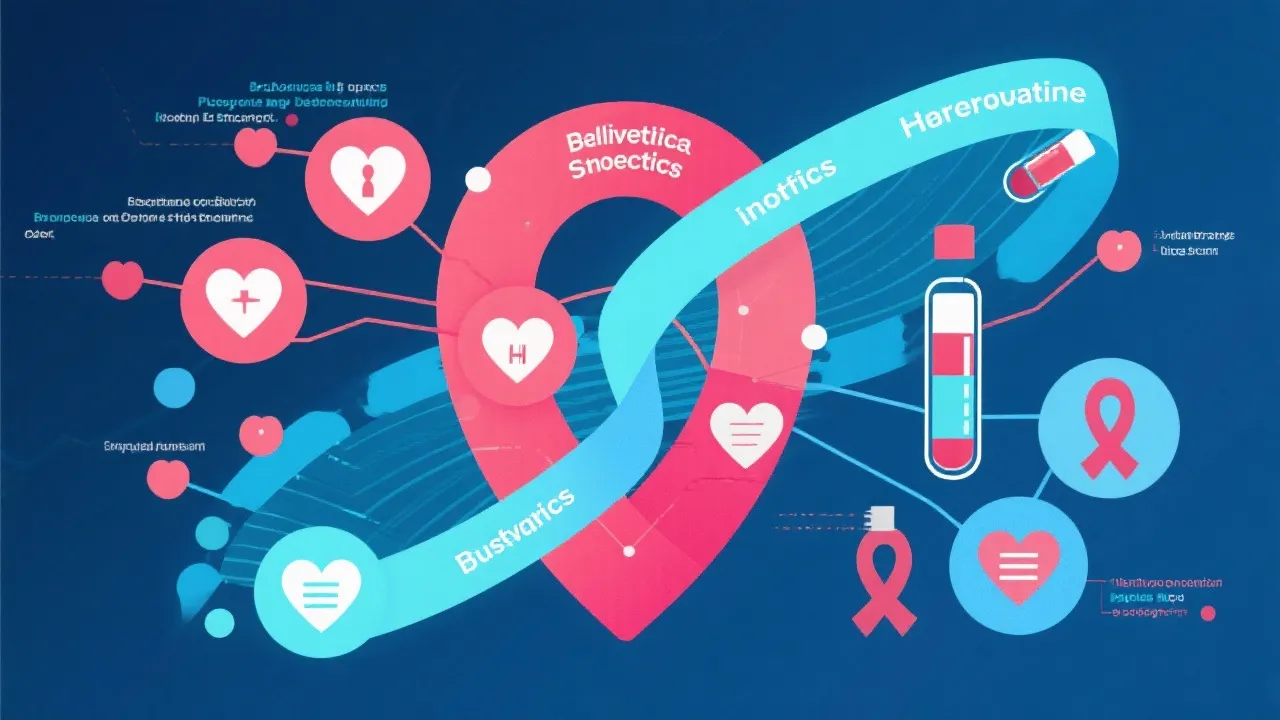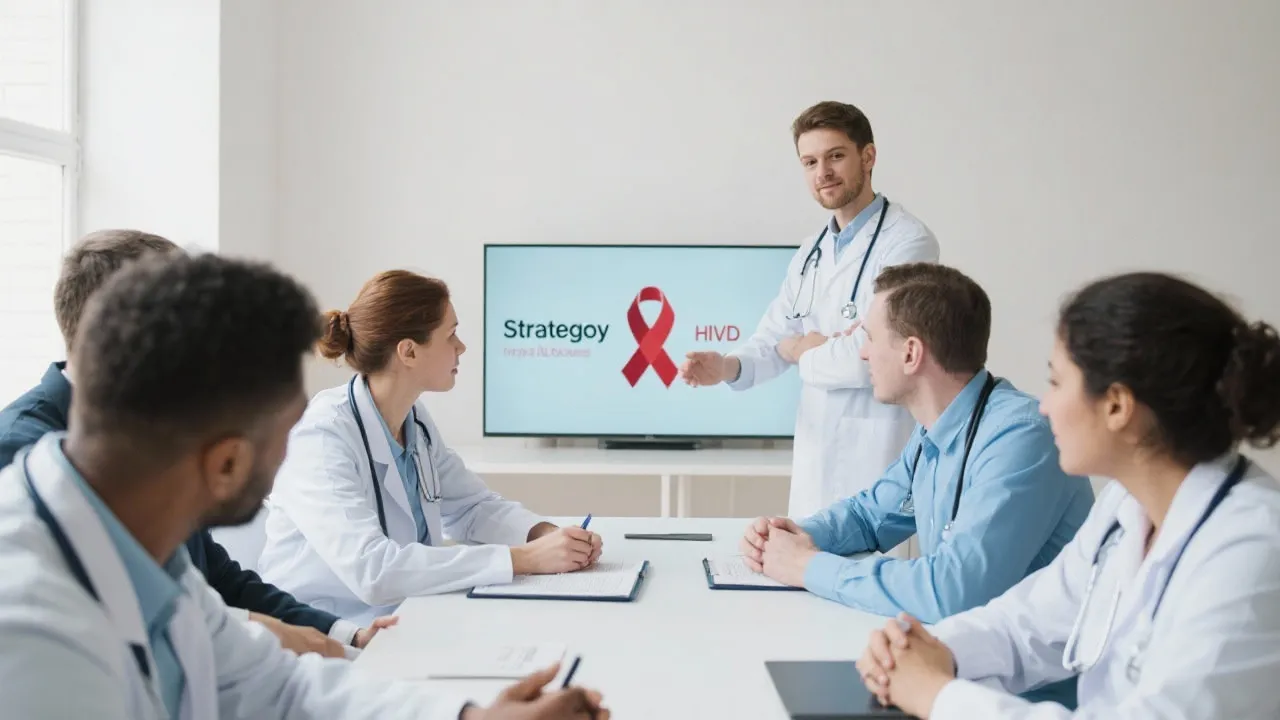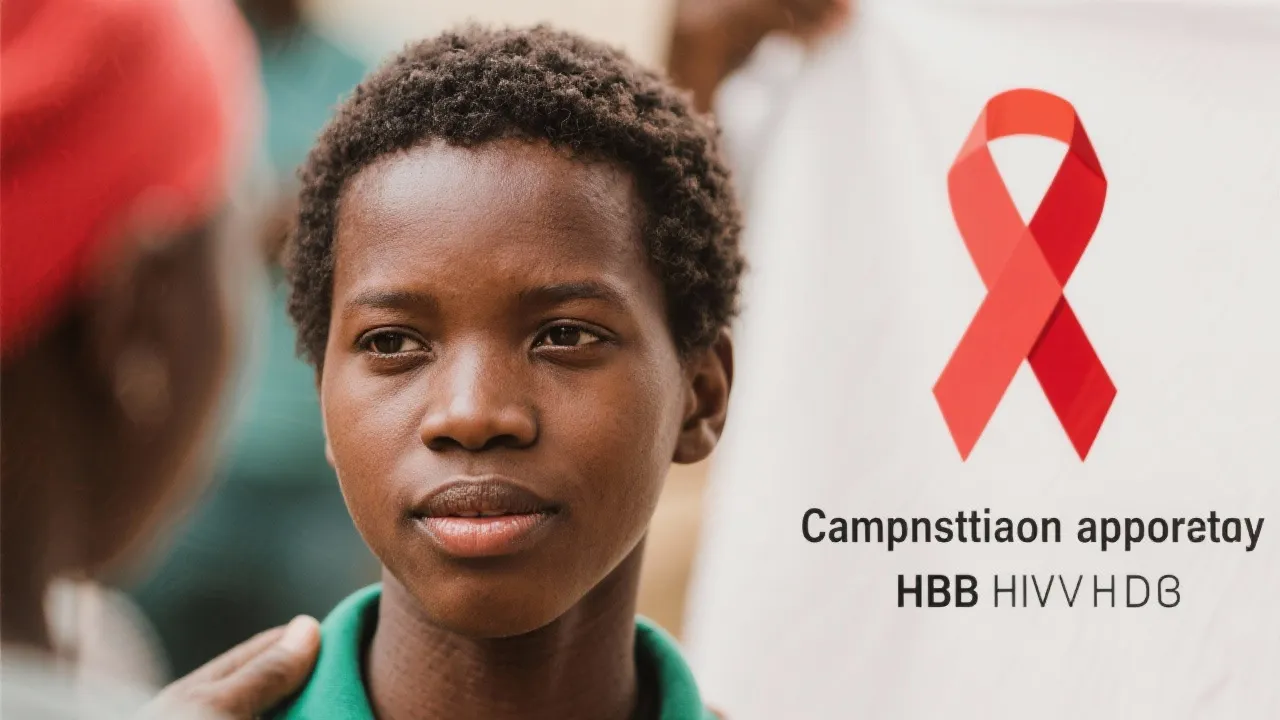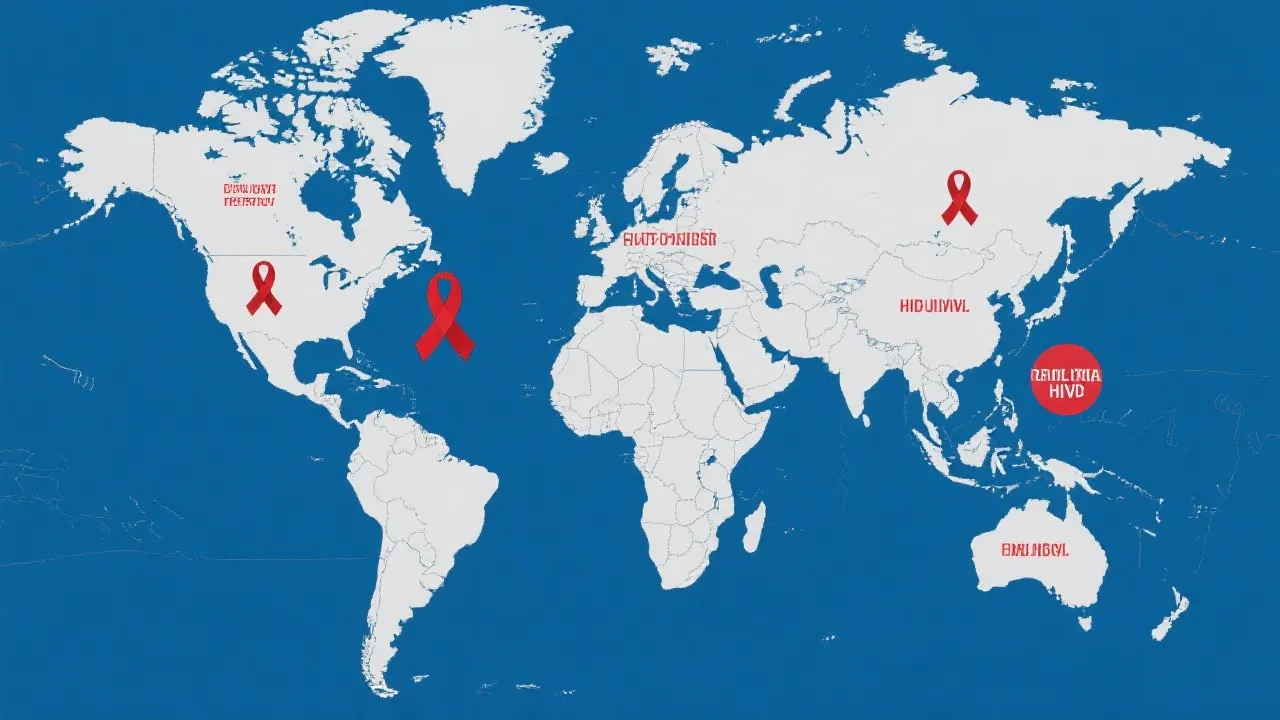Innovative Strategies for HIV Prevention
This article explores the imperative combination of behavioral and biomedical strategies for HIV prevention, aimed at significantly reducing transmission rates. Behavioral approaches focus on lifestyle changes and education, while biomedical methods include interventions like pre-exposure prophylaxis (PrEP) and antiretroviral therapy (ART). Together, these strategies form a comprehensive prevention framework, enhancing their effectiveness and addressing varying needs.

Understanding HIV Prevention Strategies
The ongoing battle against HIV has necessitated a blend of both behavioral and biomedical strategies to effectively curb its spread. While advancements in biomedical interventions, such as pre-exposure prophylaxis (PrEP) and antiretroviral therapy (ART), have revolutionized prevention efforts, the role of behavioral strategies continues to be of paramount importance. This dual approach not only addresses the medical aspects of HIV prevention but also the social and behavioral factors that play a crucial role in transmission.
The Importance of Behavioral Strategies
Behavioral strategies focus on changing individuals' behaviors and societal norms to reduce the risk of HIV transmission. These strategies include educational programs, counseling, and community-based initiatives aimed at promoting safe practices like condom use and regular HIV testing. For instance, educational initiatives can inform individuals about the importance of knowing their HIV status and the benefits of early detection and treatment. Education is pivotal in breaking down misconceptions about the virus and reducing stigma, which can prevent individuals from seeking testing or treatment.
A critical aspect of behavioral strategies is the focus on building healthy relationships and communication skills. This includes training individuals, especially young people, on how to talk about sexual health with partners, making it easier to negotiate safer sex practices. By fostering environments where open discussions about HIV and sexual health occur, the fear and stigma surrounding the disease can be diminished, encouraging more individuals to seek help and support.
Biomedical Interventions: A Game-Changer
On the biomedical front, interventions such as PrEP and ART have been highly effective in reducing HIV transmission. PrEP involves the use of antiretroviral drugs by HIV-negative individuals to prevent infection, while ART helps those living with HIV to achieve an undetectable viral load, reducing the risk of transmission. These interventions have been groundbreaking, yet they reach their full potential only when integrated with strong behavioral support systems. The efficacy of PrEP can be significantly enhanced when combined with counseling sessions that encourage adherence and address any fears or concerns about side effects.
Moreover, advancements in biomedical technologies, such as the development of long-acting injectables, are changing the landscape of HIV prevention. These medications not only improve adherence by allowing individuals to take medication less frequently but also help to ease the burden many face when managing daily medication regimens. Innovative biomedical interventions, thus, complement the existing behavioral strategies by providing effective tools for prevention and treatment.
The Synergy of Behavioral and Biomedical Approaches
Combining these strategies creates a robust prevention framework. For example, educating individuals about PrEP and addressing barriers to its use, such as stigma or misinformation, ensures wider acceptance and adherence. Similarly, providing psychosocial support for those on ART enhances their quality of life and treatment adherence, leading to better health outcomes. For communities that have integrated both behavioral and biomedical strategies, we often see dramatic shifts in health statistics. These integrated approaches can create a cycle of positivity where increased awareness leads to widespread adoption of preventive measures, thereby reducing infection rates.
This synergy encourages ongoing community engagement and promotes the importance of collective responsibility in managing HIV risk. Campaigns that highlight success stories from members of the community who have benefited from HIV prevention strategies can motivate others to participate, thereby reinforcing healthy behaviors and norms.
Challenges in Implementing Combination Strategies
Implementing these integrated strategies is not without challenges. Stigma, lack of access to healthcare, and socio-economic factors can hinder their effectiveness. For instance, individuals from marginalized communities may face additional barriers such as language differences, cultural misunderstandings, and economic hardships that limit their access to HIV prevention resources. Furthermore, structural factors, such as inadequate healthcare infrastructure or insufficient funding for public health initiatives, can further complicate efforts to increase the usage of PrEP or ART.
Other potential obstacles include misinformation spread through social media, which can foster fear and resistance to testing or treatment. Community leaders and healthcare professionals need to actively engage with individuals to dispel myths and provide accurate information. Efforts must be made to ensure that these strategies are accessible to all, including marginalized communities who are often disproportionately affected by HIV.
Addressing these challenges requires a multifaceted approach that involves policy advocacy, community mobilization, and targeted outreach programs. By fostering partnerships among healthcare providers, community organizations, and policymakers, we can work toward overcoming the barriers that prevent effective implementation.
Examples of Successful Implementation
Countries that have successfully deployed combination strategies have seen significant reductions in HIV transmission rates. For instance, coordinated efforts involving both the healthcare and community sectors have proven effective in increasing testing rates and PrEP uptake, demonstrating the power of these integrated approaches. In South Africa, for example, a national campaign combining free HIV testing, education on ART, and accessibility to PrEP has led to consistently lower rates of new HIV infections.
Moreover, in high-prevalence areas, community healthcare workers have played a pivotal role in preventing HIV transmission through outreach programs that emphasize personal connection and support. These workers, often from the same communities they serve, help break down barriers and build trust, encouraging individuals to access the services they need. Their work in engaging peers has resulted in increased uptake of both testing and preventive measures, showcasing the effectiveness of grassroots efforts in HIV prevention.
In addition, case studies from various regions have illustrated how local adaptations of international best practices can lead to successful outcomes. For example, in some urban areas, integrating drug addiction support with HIV prevention services has shown a reduction in new infections among people who inject drugs. These tailored approaches highlight the necessity of contextualizing strategies to address local needs and cultural nuances effectively.
Future Directions and Innovations
The future of HIV prevention lies in further refining and innovating these strategies. Research is ongoing to develop new biomedical interventions, such as long-acting injectable PrEP, that could offer more convenience and adherence. These innovations are significant as they promise to change the face of HIV prevention, making it simpler for individuals to remain adherent to their prevention regimens.
Simultaneously, leveraging digital platforms to enhance behavioral interventions could lead to wider reach and impact. Telehealth has emerged as a potent tool for providing counseling and support, especially in regions where traditional healthcare services may be lacking. Online platforms can facilitate access to educational resources, virtual support groups, and even anonymous testing services.
Moreover, the incorporation of technology, such as mobile apps that remind users to take their medication, can contribute to improved adherence rates for biomedical interventions. These apps can also include functionalities such as educational content about HIV transmission and prevention, fostering a more informed community.
As research continues to unveil new possibilities in HIV prevention and treatment, it is essential to remain dedicated to integrating these advancements with existing behavioral strategies. By being proactive and adaptable, stakeholders can ensure a comprehensive approach that addresses both immediate needs and long-term aspirations in the fight against HIV.
Comparison of Behavioral and Biomedical Strategies
| Aspect | Behavioral Strategies | Biomedical Strategies |
|---|---|---|
| Focus | Education, behavior change, social norms | Medical interventions, PrEP, ART |
| Key Methods | Counseling, community programs, media campaigns | Drug therapies, regular testing, risk management |
| Barriers | Stigma, misinformation, cultural resistance | Access to medication, adherence, cost |
| Community Engagement | Peer-led initiatives, educational outreach, support groups | Collaborative healthcare programs, access facilitation |
| Long-term Impact | Reduction of stigma, lifestyle changes, societal awareness | Health outcomes improvement, prevalence reduction |
FAQs
- What are behavioral strategies for HIV prevention?
These involve educational and communicational efforts to promote safe practices, reduce risky behavior, and combat stigma associated with HIV.
- How do biomedical strategies work in preventing HIV?
Biomedical strategies encompass medical interventions like PrEP and ART, which reduce the risk of acquiring or transmitting HIV through medical means.
- Why is a combination of strategies important?
Combining behavioral and biomedical strategies enhances overall effectiveness, addressing both the medical and social determinants of HIV transmission.
- What are the challenges of implementing these strategies?
Challenges include addressing stigma, ensuring accessibility, and tackling socio-economic inequalities that can impede strategy effectiveness.
- What role does stigma play in HIV prevention efforts?
Stigma surrounding HIV can lead to discrimination, discourage testing and treatment, and prevent individuals from seeking the help they need, thus fostering further transmission of the virus.
- How can technology enhance HIV prevention efforts?
Technology can facilitate easier access to educational resources, support groups, and telehealth services, thus improving knowledge and adherence related to both behavioral and biomedical strategies.
- What are some success stories in HIV prevention?
Countries and communities that have effectively combined behavioral and biomedical strategies have shown significant decreases in new HIV infections, increased treatment adherence, and improved community mobilization around health issues.
In conclusion, the integration of behavioral and biomedical strategies for HIV prevention represents a comprehensive approach to tackling the epidemic. By addressing both the medical and social factors involved, this dual strategy offers a path toward significantly reducing new infections and ultimately achieving global HIV eradication. Continued commitment to innovative efforts, community engagement, and the elimination of stigma will be crucial to further these goals. Drawing upon each element's strengths and fostering a collaborative and inclusive environment, we can move closer to a world where HIV transmission is a distant concern.





